League of Legends Item Rework: Full Guide to 2025 Changes
Updated On: November 12, 2025 by Aaron Connolly
Core Concepts of the League of Legends Item Rework
The League of Legends item rework changed how champions get stronger with items. Riot toned down overall item power and opened up more build paths.
Riot wanted to put champion abilities back in the spotlight, so items wouldn’t outshine champion kits anymore.
Goals and Philosophy of the Rework
Riot’s main goal? Cut down item power, which had crept up way too high since mythic items arrived. The devs wanted players to feel like champions mattered more than their gear.
They stuck to three main ideas:
- Bring back champion fantasies as the core experience.
- Stop games from snowballing out of control with gold leads.
- Make item choices actually matter.
Items had gotten about 30-40% stronger than before mythics. This made gold more valuable and sped up snowballing.
AP itemization had its own headaches. Mages felt forced into buying things like Rabadon’s Deathcap and Void Staff every game.
Pattern-bound vs Output-bound Design
Riot now makes items boost how champions play, not replace their abilities. Remember Everfrost? It let Ahri land charms too easily, which just didn’t feel right.
In the new system, items work with champion play patterns. Shadowflame, for example, now gives bonuses for damage-over-time, so champs who love that style get more out of it.
Timeline and Key Patches
The rework rolled out with the 2024 preseason in Patch 14.1. Riot kept tweaking things across several more patches that year.
Big patches:
- Patch 14.1: Mythic items gone, power trimmed down.
- Patch 14.19: More focus on champion-driven items.
- May 2024 patches: AP item tweaks after player feedback.
This overhaul took over two seasons of dev time. Riot tested all sorts of stuff and listened to tons of feedback before locking things in.
Support item updates dropped alongside the main changes. Riot added five new support upgrades after quest completion, like Solstice Sleigh and Dream Maker.
These upgrades gave support players more agency and better power spikes. The quest system got streamlined, so supports didn’t have to worry about weird late-game minion mechanics anymore.
Major Balance Considerations
Dropping item power meant Riot had to rebalance a bunch of other stuff. They wanted items to feel good but didn’t want champions to get left behind.
Main balance headaches:
- Keeping items fun after nerfs.
- Making sure no champs took over after changes.
- Actually boosting build diversity, not killing it.
Riot packed item power into simpler, focused effects. Liandry’s now fits sustained damage champs, while Stormsurge caters to bursty ones.
Gold economy tweaks became necessary since items didn’t turn gold into power as efficiently. Riot re-examined objectives and gold generation to keep the game’s pace right.
For AP champs, Riot introduced Cryptbloom to shake up the usual Void Staff rush. Rabadon’s Deathcap didn’t change, though—players just love that big AP spike.
They mostly left AP fighters alone for now, focusing on mages and assassins who’d been unhappy with item options for a while.
Removal of Mythic Items
Riot yanked mythic items from League during the 2024 preseason. They realized mythics caused more headaches than they solved.
The system just didn’t work for about half the champs. It boxed in build flexibility and made the game more complicated.
Why Mythic Items Were Removed
Mythics fit some classes, but others—especially fighters—struggled. Fighters have so many subclasses, and only a few mythics per class just wasn’t enough.
Riot couldn’t make everyone happy with so few options. Adding more would’ve made things even messier.
Main issues:
- Only half the champs liked their mythics.
- Items got overloaded with stats and effects.
- New champs had to be built around mythic effects.
- Fewer choices for later item slots.
Every mythic needed to offer four different stats just to stay relevant. That got confusing, especially for new players.
The system also forced weird design choices. ADCs, for example, relied on item dashes like Galeforce instead of their own kits.
Impact on Champion Builds and Meta
With mythics gone, item stacking came back—but at lower power. Riot turned some mythics into legendaries and scrapped others.
Players can now mix and match more items, which is honestly refreshing.
What changed:
- More ways to build each champ.
- Items got simpler and more focused.
- Champion abilities matter more now.
- No more massive one-item power spikes.
Ex-mythics that became legendaries lost some power, so stacking didn’t get out of hand.
The meta shifted. Teams can’t just rely on mythic spikes to win fights anymore.
Players had to figure out new builds for their favorite champs. Some even found combos they’d never considered before.
AP Item Changes and Mage Impact
Patch 25.10 shook up 13 different AP items, changing how mages build and play at every level. Riot removed awkward stuff like bonus gold generation and made items cheaper and easier to use.
Shift in Mage Itemisation
Horizon Focus got a big rework—AP jumped from 75 to 110, but it lost its damage amp. Now it’s just a straight-up AP stat stick.
Cost cuts hit a bunch of core items. Luden’s Companion, Morellonomicon, Nashor’s Tooth, and Rabadon’s Deathcap all dropped by 100 gold. That means mages hit their power spikes sooner.
Lich Bane now builds out of Blasting Wand instead of Needlessly Large Rod. It’s cheaper, though AP dropped from 115 to 100. Still, it’s easier to fit into mid-game builds.
Seraph’s Embrace got nerfed hard. The shield dropped from 200 to 150 base, and mana scaling fell from 20% to 15%. It’s still usable, but not the panic button it used to be.
| Item | Cost Change | AP Change | Notable Effect |
|---|---|---|---|
| Horizon Focus | No change | +35 AP | Lost damage amp |
| Lich Bane | Reduced | -15 AP | New recipe path |
| Luden’s Companion | -100 gold | No change | Faster spike |
| Seraph’s Embrace | No change | No change | Weaker shield |
Effects on Burst vs. Sustained Damage
Burst mages like Syndra and Ahri love the cheaper Luden’s and Deathcap. They get their big damage faster now.
Sustained damage dealers see mixed results. Liandry’s Torment lost 10 AP, so it hits a bit less hard, but Nashor’s Tooth got cheaper—great for Teemo and Diana.
Stormsurge lost its 30 bonus gold on takedowns, so roaming assassins can’t snowball gold as easily. That’ll sting if you relied on those quick item finishes.
Horizon Focus losing its amp means mages have fewer multiplier effects. Now, raw AP matters more than clever synergy.
Champion Relevance Post-Rework
Classic burst mages like Ahri, Syndra, and LeBlanc benefit most from the cheaper core items. Luden’s and Deathcap let them spike sooner and stay dangerous in fast games.
Hybrid champs like Diana and Ekko enjoy the cheaper Lich Bane and Nashor’s Tooth. Two-item power spikes are way more reachable now.
Artillery mages lose a bit of punch. Xerath and Vel’Koz used to rely on Horizon Focus’s amp for poke, but now they just have to stack AP.
Sustain mages feel the Seraph’s nerfs. Kassadin and Ryze, in particular, can’t count on that big shield and might need to play safer or look for other defenses.
Major AP Items: Buffs, Nerfs, and Reworks
Recent AP item tweaks have jumbled up the mage meta. Bloodletter’s Curse brings new sustain mechanics, while Hextech Rocketbelt and Horizon Focus get targeted changes to keep them in check.
Bloodletter’s Curse Overview
Bloodletter’s Curse shakes up AP itemization with built-in sustain. The item gives ability power and heals you for a chunk of your ability damage to enemy champs.
Key Stats:
- Cost: 3,200 gold
- Ability Power: 80 AP
- Health: 300 HP
- Unique Passive: Heals for 15% of ability damage dealt to champions
This item’s a lifesaver for mages who need to survive without giving up damage. It shines on champs like Cassiopeia and Azir who pump out steady DPS.
The healing scales up with your AP, so the more you build, the more you heal.
Best Champions:
- Battle mages (Cassiopeia, Ryze)
- DPS mages (Azir, Orianna)
- Sustain builds in general
Hextech Rocketbelt Adjustments
Hextech Rocketbelt got hit with nerfs to both mobility and damage. Riot wanted to tone it down in pro play but keep it useful in solo queue.
What’s different:
- Active cooldown up from 40 to 50 seconds.
- Rocket damage down by 15 per bolt.
- Movement speed after use drops from 75% to 60%.
These changes cut its burst and escape power. You’ll have to think twice before using the active in team fights.
Impact on Champions:
- Diana: Still good, but not as oppressive in lane.
- Ekko: Roaming gets a bit harder.
- Fizz: Lower all-in threat.
Rocketbelt’s still core for champs who need that dash. If you’re building it, maybe grab it second or third instead of rushing it.
Horizon Focus Changes
Horizon Focus just got a full mechanical rework. Now, it focuses on ability range instead of crowd control synergy. The new passive encourages long-range spell casting by boosting your damage.
New Mechanics:
- Ability Power: 100 AP (up from 85)
- New Passive: Abilities cast from 750+ range deal 15% more damage
- Removed: Crowd control damage amplification
This update pushes the item away from combo-heavy champs and toward poke specialists. Long-range mages really shine with this version.
Winners:
- Xerath gets more consistent damage
- Ziggs can capitalize on artillery spells
- Vel’Koz pokes even harder
Losers:
- Syndra loses her crowd control synergy
- Ahri’s charm combo doesn’t hit as hard
- Annie’s burst combo drops in power
At 3,100 gold, the item feels more accessible for scaling mages as a second or third buy.
Iconic Items and Their Current State
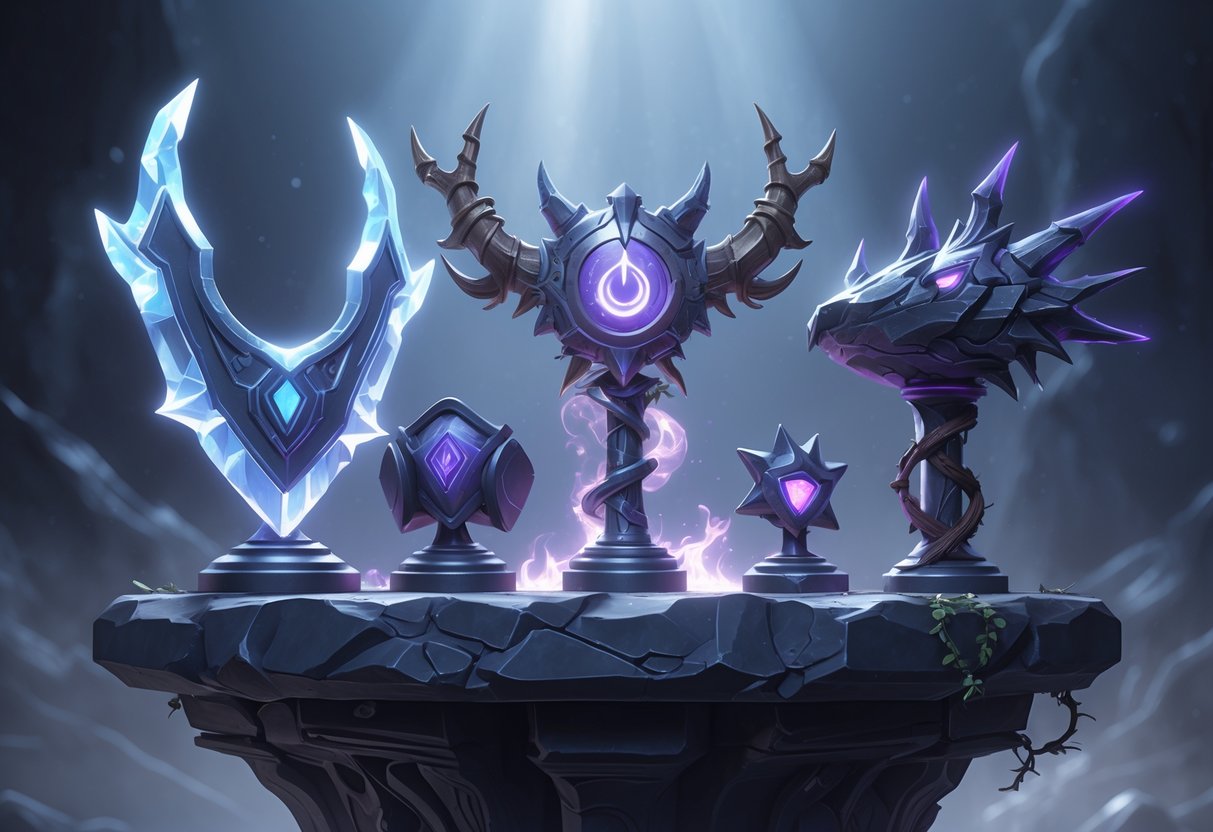
A bunch of legendary items got some pretty big changes after recent reworks. Some got complete overhauls, while others just saw targeted tweaks. Liandry’s Torment shifted from a generalist item to a more pattern-specific pick. Meanwhile, Lich Bane mostly kept its core vibe but got a few balance changes.
Liandry’s Torment Trends
Liandry’s changed a lot in this rework. The devs pushed it back toward being a high-uptime caster item that works best when you deal damage over time.
Now, Liandry’s fits champions who:
- Cast spells a lot during teamfights
- Prefer sustained damage over burst
- Want steady output instead of quick eliminations
It now competes directly with Stormsurge, which is all about burst damage in short windows.
Key Changes:
- Feels more pattern-bound
- Pairs better with damage-over-time effects
- Doesn’t help burst champs much anymore
We really need to think about our champion’s playstyle before buying this. Cassiopeia and Azir get a lot out of it, while burst mages should look elsewhere.
Lich Bane Adjustments
Lich Bane still nails its identity as the top ability power and auto-attack hybrid item. Riot mostly just fine-tuned its numbers.
Champions who weave auto-attacks between spells still love it. AP assassins and hybrids rely on it for their combos.
Current State:
- Kept its unique niche
- Got some power budget tweaks
- Still core for certain champ patterns
Fizz, Ekko, and Diana keep building Lich Bane all the time. That Spellblade passive still gives a satisfying punch after ability rotations.
Liandry’s got a big overhaul, but Lich Bane’s changes feel pretty safe. You can count on it to perform well in most patches.
Updated Burst Items for Mages
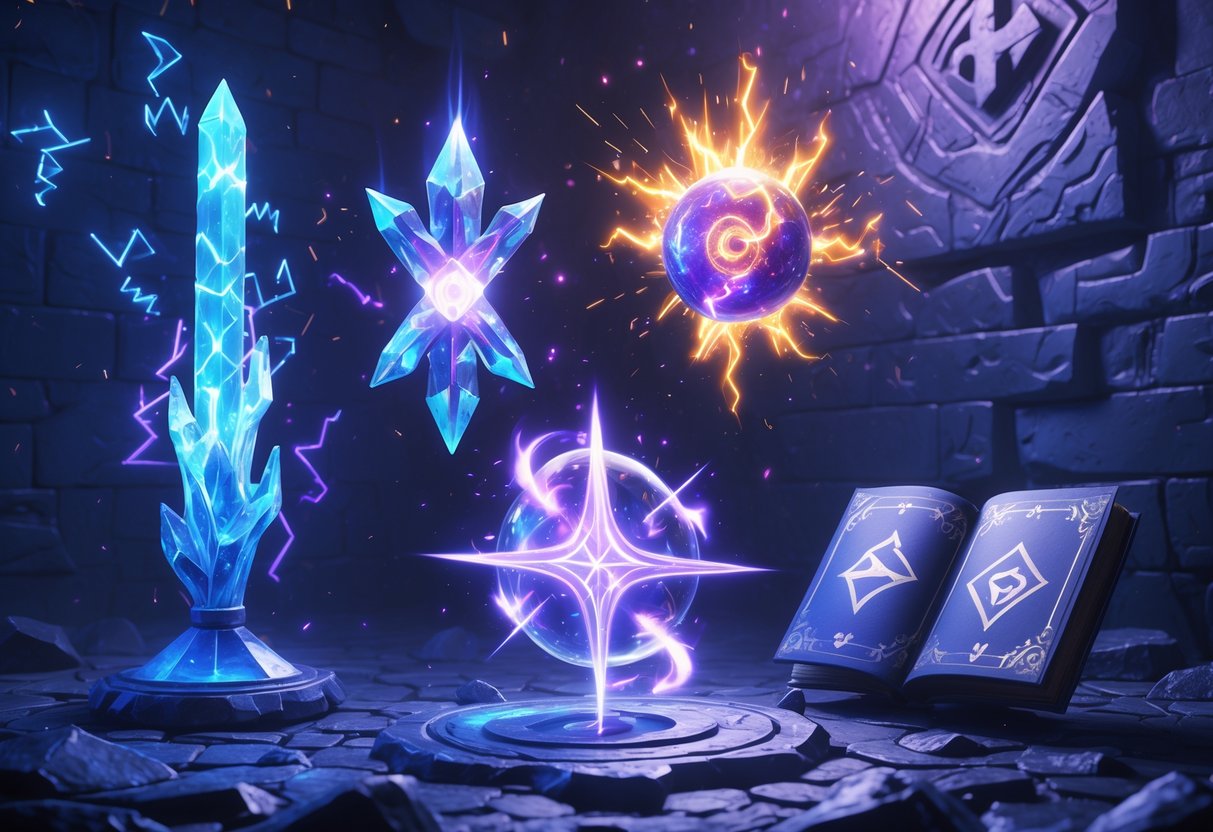
Riot’s latest rework totally changed how burst mages build. Caster’s Companion is now the main burst pick. Malignance brings ultimate-based spikes, and Morellonomicon still covers anti-heal needs.
Luden’s Companion in the New Meta
Let’s clear things up: Caster’s Companion replaced Luden’s Tempest as the go-to burst item. For £3,000 gold, it packs a punch for single-target damage.
You build it from Lost Chapter and Hextech Alternator, plus £700 more gold. It gives you 90 ability power, 20 ability haste, and 600 mana.
Key Mechanics:
- Earn Shot Charges every 3 seconds (up to 6)
- Spend charges for 40 (+8% AP) magic damage
- Hits your main target and one nearby enemy per charge
- Extra charges repeat on the primary target at 35% damage
LeBlanc and Syndra really make this item shine. The charge mechanic rewards good timing, not just spamming spells.
Quick tip: Save up your charges for big combos instead of burning them on minions. The single-target focus makes it great for deleting priority targets.
Malignance Improvements
Malignance takes a new spin on ultimate-focused gameplay. For £3,000 gold, you get 80 ability power, 20 ability haste, and 600 mana, plus some unique ultimate synergy.
The Ultimate Power passive adds 15 ability haste just for your ultimate. That means shorter cooldowns on your big plays.
Ultimate Flames burns the ground under enemies hit by your ult:
- Lasts 3 seconds
- Deals 60 (+6% AP) magic damage per second
- Reduces magic resistance by 6-12 depending on level
Champions like Orianna, Cassiopeia, and Lissandra get a ton of value here. The ground effect adds a strategic layer beyond just raw damage.
Heads up: This item only works if your champion’s ultimate actually matters for damage. Don’t bother if your ult is just for utility.
Morellonomicon’s Role
Morellonomicon doesn’t get much spotlight in the rework, but it still fills the anti-healing role for burst mages. It’s a must-have against high-sustain comps.
The grievous wounds are critical versus champs like Aatrox, Vladimir, or ADCs with lots of lifesteal. Mages without this option struggle to cut through healing.
Optimal Usage:
- Build it second or third against heavy healing
- Grab it after your main damage item
- It’s clutch in long teamfights
If the enemy team has multiple healers, slot in Morellonomicon. That 60% grievous wounds can decide fights.
Try these items in the practice tool to learn their damage breakpoints before you hop into ranked.
Empowering On-Hit and Hybrid Champions
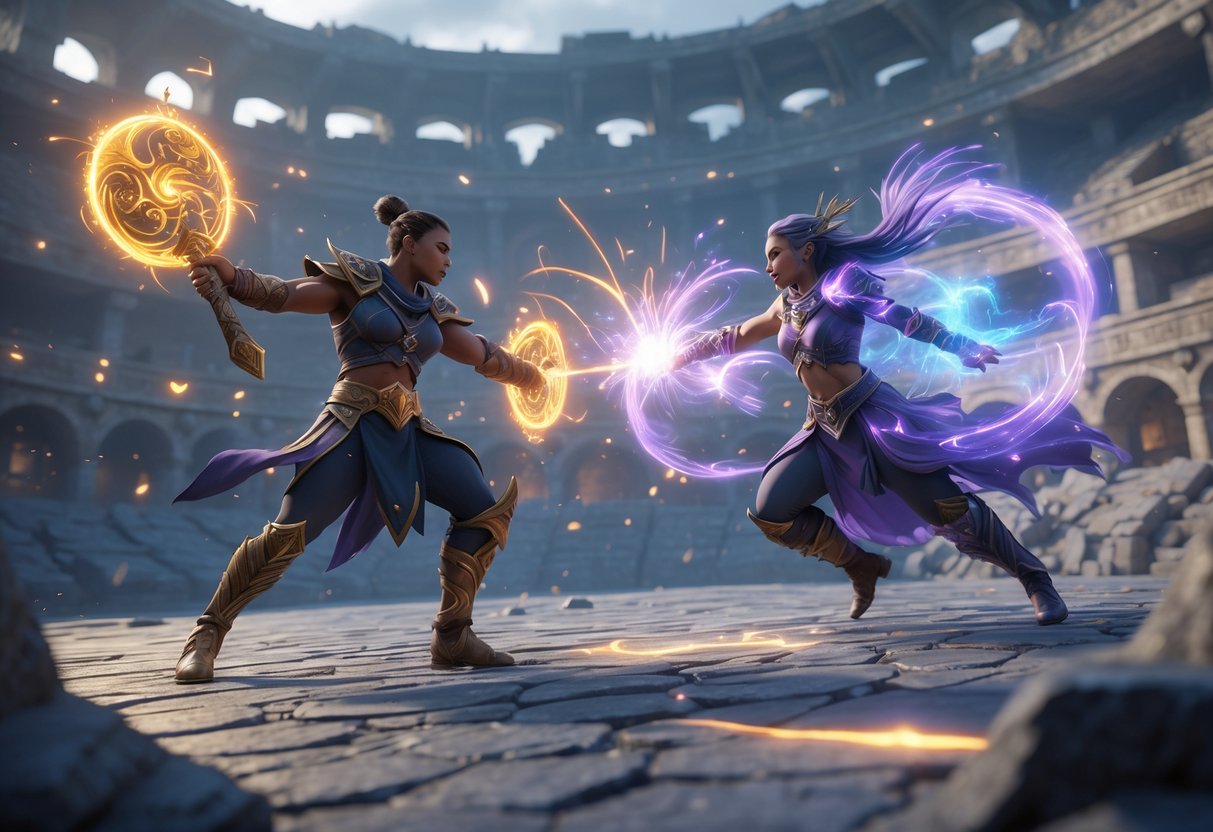
The rework brings big changes for champs who build both attack damage and ability power. Nashor’s Tooth gets a big buff, and fighters now have better item options when diving into fights.
Nashor’s Tooth and On-Hit Style
Nashor’s Tooth feels way better for hybrid builds now. The item gives stronger stats for champs like Kayle and Teemo who want both AD and AP.
Key Changes to Nashor’s Tooth:
- Higher ability power scaling
- Improved on-hit damage ratios
- Lower cost, so it’s easier to build
Attack-heavy champs benefit the most from this. Kayle now deals more with auto-attacks while still scaling abilities. Teemo’s poison hurts more right from the start.
The new Nashor’s pairs nicely with Rageblade. This combo creates a strong hybrid build path that just didn’t work before. Now, more champs can pick between full AP or hybrid builds.
How Changes Affect Fighters and Divers
Fighters now have more ways to mix damage types. Jax and Irelia can build items that boost both their spells and auto-attacks.
Benefits for Fighters:
- Scale better into late game
- More flexible item choices
- Hit stronger power spikes
Divers like Diana and Ekko can keep dealing steady damage after using their spells. The hybrid items let them stay relevant even when their abilities are down.
Team fights feel more dynamic now. Hybrid champs can shift their damage based on what the enemy builds. If the enemy stacks magic resist, these champs still hit with physical damage from autos.
The rework opens up new strategies. Teams have to think about both damage types when facing hybrid threats.
Late Game Powerhouses and Scaling
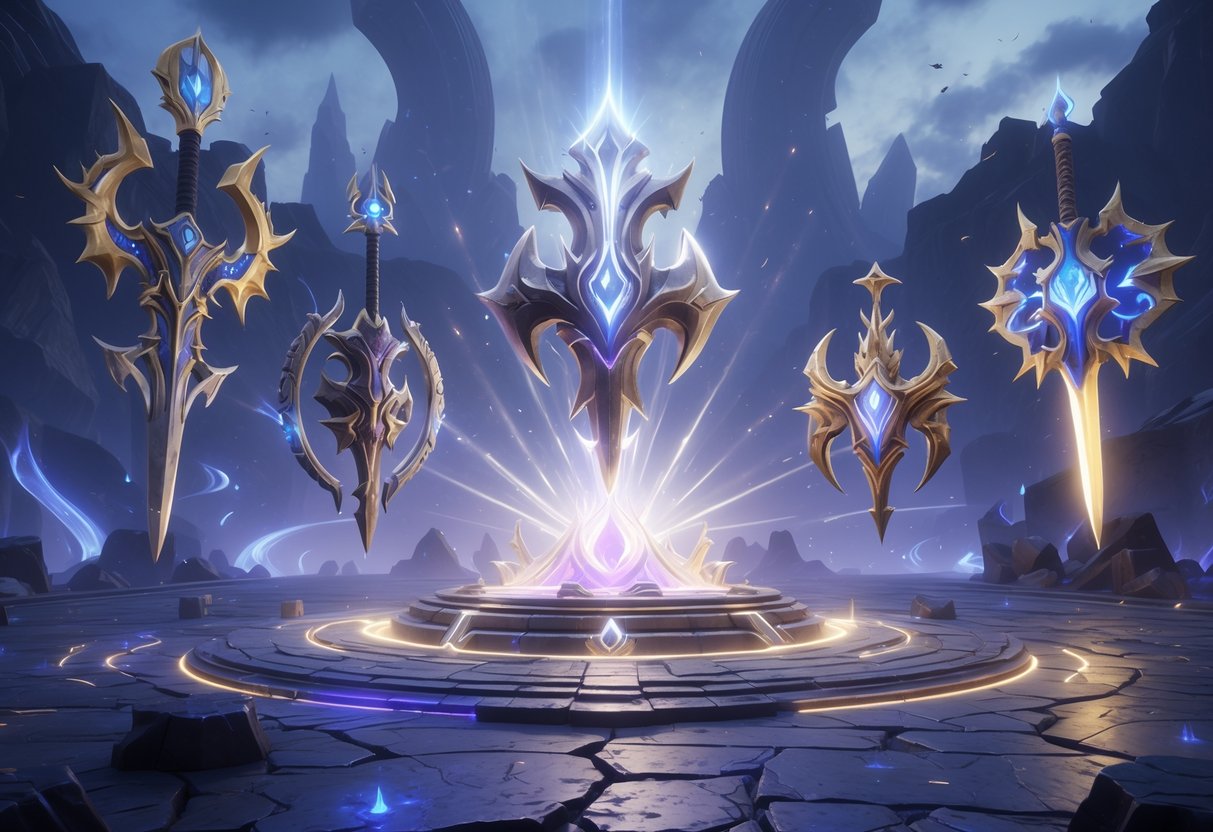
The new item system shakes up how champs scale late game. Rabadon’s Deathcap stays the top AP multiplier, but new items like Stormsurge give burst champs other options. These changes make power spikes and champion identity stand out more.
Rabadon’s Deathcap Adjustments
Rabadon’s Deathcap comes out of the rework almost the same, but now feels even more important. Riot made sure it’s still the go-to late-game AP item.
The devs tried a few alternatives during testing. Players always came back to the classic AP multiplier. There’s just something satisfying about that raw power.
Key Changes:
- Still gives 35% AP amplification
- Supporting items got a bit weaker
- Costs more compared to other legendaries
- Clear identity as the big scaling buy
With other items toned down, Deathcap matters even more once you get it. If you hit this spike before your opponents, you get a big edge.
The item now signals a real commitment to late-game scaling. Teams have to choose between immediate power and saving up for that game-changing purchase.
Seraph’s Embrace Evolution
Seraph’s Embrace changes a lot in the new system. It shifts away from burst and focuses more on sustained fighting.
Mana-to-AP conversion now plays a bigger role. Champs who thrive in long fights, like Cassiopeia and Ryze, get the most out of the improved scaling.
Evolution Changes:
- Better mana-to-AP ratios
- Stronger shield scaling
- Pairs well with extended combat
- Less burst potential
The new Seraph’s rewards smart positioning and picking your fights. You can’t just dive in for quick trades. Instead, you want to stick around and use your full mana pool.
Item choices feel clearer now. Burst champs look elsewhere, but sustained damage dealers love the new Seraph’s.
Stormsurge Utility
Stormsurge arrives as the new burst-focused AP item. It’s built for champs who want all their damage up front.
Stormsurge gives instant power spikes for assassins and burst mages. Unlike Liandry’s, which rewards damage over time, this item is all about deleting someone in a single rotation.
Stormsurge Features:
- Front-loaded damage
- Burst amplification mechanics
- Not much sustained damage
- Perfect for combo champs
The design is pretty different from old-school AP scalers. Instead of ramping up, you get all your power right away if you time it well.
Teams now need to think about when their damage lands, not just how much. If your comp wants to pick people off, Stormsurge is great. If you want long teamfights, Liandry’s is probably better.
How Champion Roles Adapt to the Item Rework
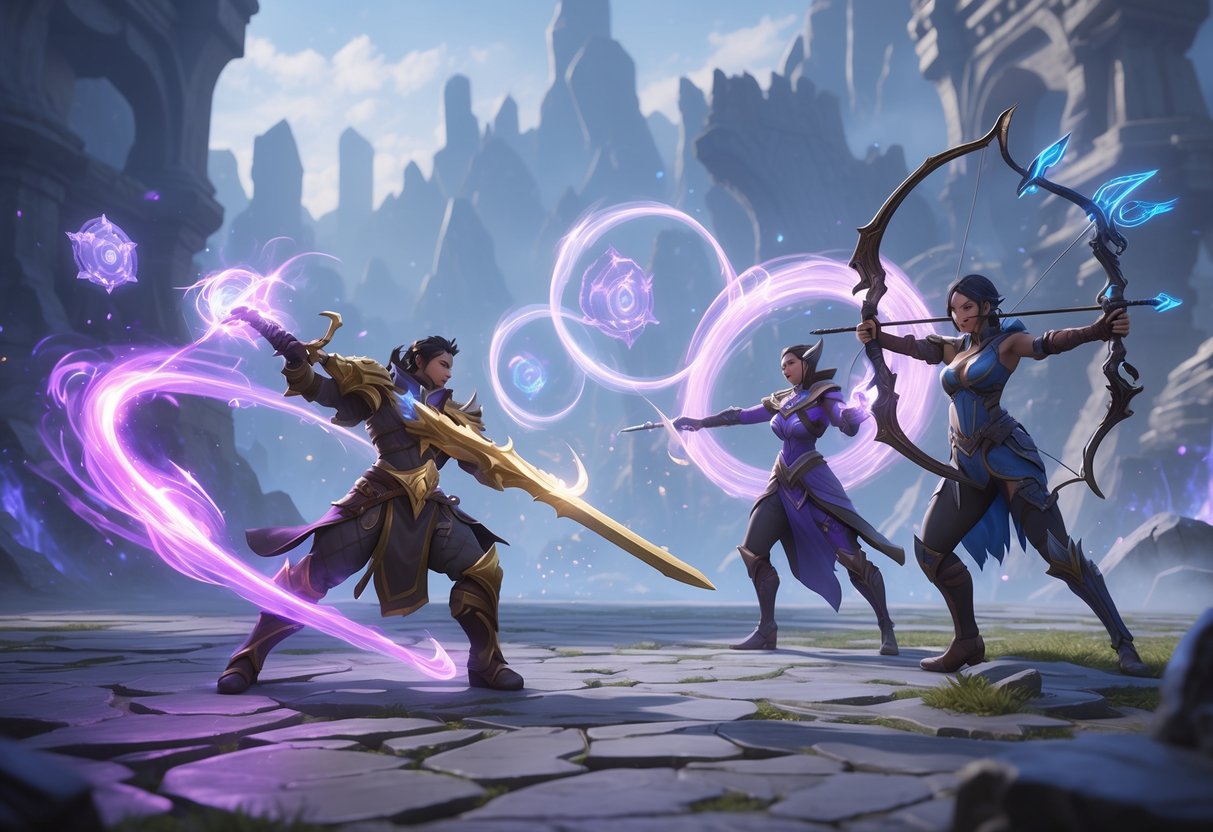
Every role reacts differently when the item system changes. Mages got more build options but lost some raw numbers. Marksmen had to adjust to weaker items, and supports picked up new upgrade paths.
Mid Laners: AP Mages
AP mages probably felt the biggest shift from this rework. Rabadon’s Deathcap is still a must-buy for most, but Riot also added Cryptbloom as a Void Staff alternative.
Items are more pattern-focused now. Mages pick based on their champ’s playstyle instead of just grabbing whatever’s best on paper. Champions who deal damage over time get more out of certain items.
Liandry’s fits champs who want to fight for a while. Stormsurge works for burst mages. The choices between sustained and burst damage are a lot clearer.
Mana items also got changes for more variety. Mages can pick different first items depending on what they need. Sure, Deathcap still locks a slot, but at least there are more interesting options elsewhere.
Bot Lane: Marksmen and Senna
Marksmen just got hit with power reductions across their main items. Riot aimed to curb that wild snowballing from gold leads. Now, ADCs who need those pricey items for real damage are feeling it.
Build paths for traditional marksmen lost variety. Players say they end up picking the same items over and over. The nerfs sting most in the early and mid-game.
Senna manages things differently thanks to her weird scaling. She stacks souls for range and damage, so she doesn’t lean as hard on standard ADC items. She can grab support items and still chunk people.
Bot lane now demands smarter gold use. Every item matters more since each one gives less bang for your buck. Teams need to coordinate better because ADCs take longer to ramp up.
Supports and Enchanters
Support items got a total makeover with new upgrade choices. Once you finish the support quest, you pick from five different upgrades. All of them give the same combat stats, but each one has a unique twist.
Solstice Sleigh lets you “ride” with allies and buff them in fights. Dream Maker sends out healing bubbles. These upgrades fit different playstyles but still feel like support.
The quest system now merges all the old starter items into one. Every support completes the same basic quest, no matter their champ. That old confusion about which starter to grab? Gone.
Support upgrades show up as power spikes right when laning ends. Only supports can use these items now, so no more other roles poaching them. Most support champs have one or two upgrades that just click with their kit and team.
Notable Champions Affected by Item Changes
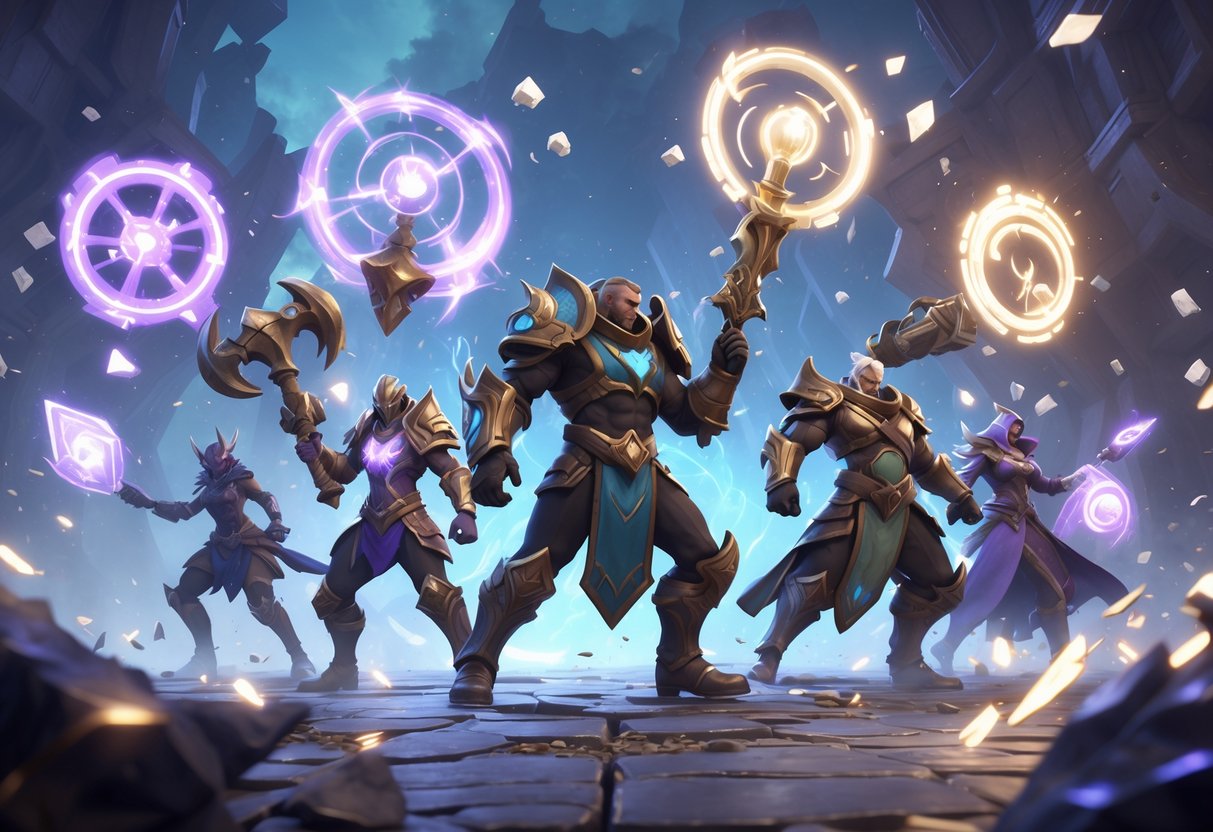
Recent item reworks have totally shaken up which champs feel strong or awkward. Some, like Diana, Lulu, and Vi, really stand out as examples of how much things have shifted.
Diana’s Place After the Rework
Diana honestly came out on top after the AP item changes. Her burst potential jumped with new mythic items that boost her AP scaling.
She always struggled with unreliable damage in team fights, but now, new item builds give her a few solid options—burst or sustained, take your pick.
Key improvements for Diana:
- Better AP ratios from new items
- More mana sustain
- Extra survivability from new defensive AP options
Diana’s jungle clear sped up a lot. The new items help her stay healthy and deal more damage, so she’s back as a top-tier jungle pick.
Her mid-lane game also got stronger. Players now choose between all-in burst or more balanced builds, depending on what the team needs.
Lulu in the Updated Ecosystem
Lulu’s experience with the support item changes is a bit mixed. Some builds got a boost, while others lost their punch. Her enchanter style works well with the new mythics that focus on team utility.
She benefits from better mana regen items, so she can spam her spells more in lane without running dry.
Lulu’s current strengths:
- Stronger shields from new support items
- More ability haste
- Improved healing and shielding
But Lulu still struggles against tanky team comps. The new items make it harder for enchanters to handle heavy armor in long fights.
Her roaming got a little worse. Some items that used to help with movement speed got nerfed, so map rotations aren’t as easy.
Vi: Adjustments and Playstyle
Vi’s build paths changed a lot after the fighter item rework. Her old bruiser builds don’t work as well, so players have to test new options.
She actually works better with lethality builds in some matchups now. That surprised a lot of Vi mains who liked her tanky, bruiser style.
Vi’s adaptation challenges:
- Core items have different stats now
- More build diversity, but it’s unclear what’s best
- Early game power spikes moved to new item breakpoints
Vi’s jungle clear didn’t really change. Her base kit still gives her enough damage and sustain to clear camps just fine.
Team fighting feels different for Vi. The new items push you toward either full damage or full tank, so hybrid builds just aren’t as good anymore.
Seasonal Meta Shifts and Strategic Adaptation
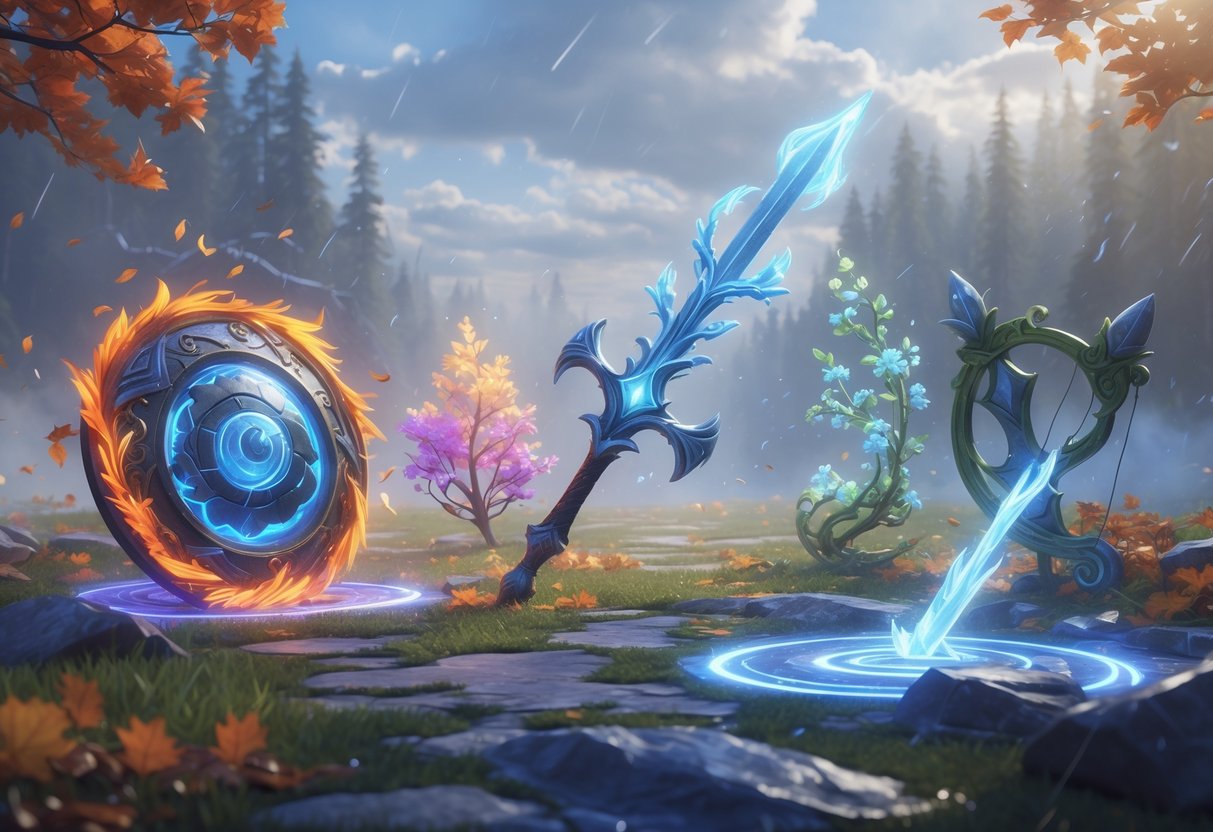
Item reworks always send shockwaves through the meta. Teams and players scramble to rethink champs and tactics. New build paths open up strategies that just weren’t possible before.
Itemisation Flexibility
The new item system gives players way more build options for the same champ. You can switch up your items based on how the game’s going, not just follow a set order.
Tank itemisation really shows off this flexibility. Abyssal Mask, for example, now boosts nearby allies’ magic damage by 12%. Tanks can go full defense or help the team dish out more damage.
AP bruisers got more choices too. Bloodletter’s Curse gives 60 AP and 350 Health, so champs like Mordekaiser can go for burst or play it slow.
Build timing matters more now. The Feats of Strength system rewards early objectives with Tier 3 boots. Teams have to choose between boot upgrades or rushing core items.
Key build considerations:
- Enemy comp changes your item priorities
- Long games make stacking items more valuable
- Objective timing shapes upgrade paths
- Team synergy decides if you go utility or damage
Strategic Opportunities Created by Rework
Item changes shake up champion drafting. Champs that used to be stuck in one role can flex into others.
The Feats system adds new pressure points. Teams juggle between power spikes for individuals and those sweet boot upgrades. Grabbing First Blood, first tower, or three epic monsters is now even more rewarding.
Vision control got a facelift with rune changes. Deep Ward makes your wards last longer in enemy jungle, and Sixth Sense spots nearby hidden wards. Teams have to rethink how they set up vision.
Late-game fights feel different since Nexus Turrets respawn. Base defenses come back after three minutes, so comebacks are actually possible. Teams can’t just expect one big push to end it.
Strategic adaptations include:
- Drafting for item synergies
- Going hard for early objectives to get Feats
- Switching up vision for new ward mechanics
- Planning for longer, drawn-out games
Frequently Asked Questions
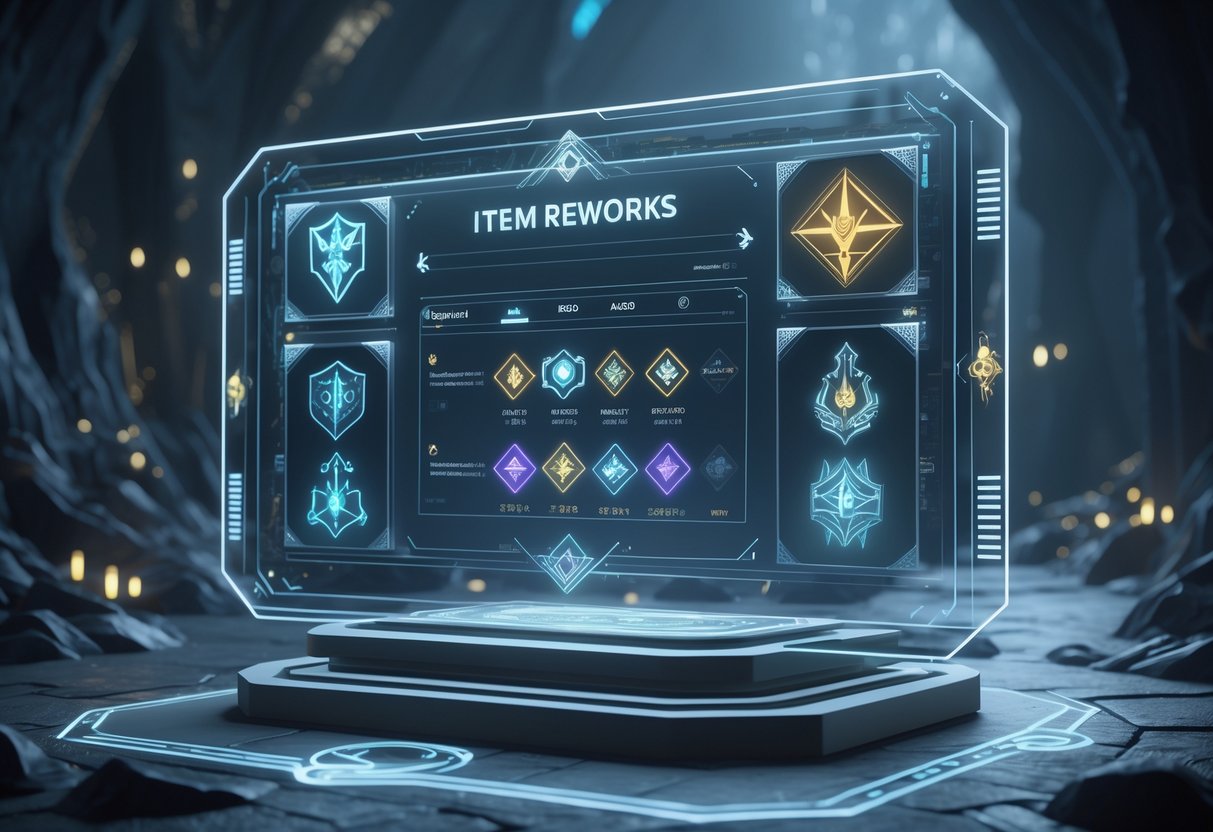
Players have a ton of questions about the item rework—stuff like build paths, what happened to mythic items, and how to adjust strategies. The answers cover everything from new progression systems to how different champion classes should adapt.
What changes have been introduced in the latest item rework for ‘Summoner’s Rift’?
The biggest change? Mythic items are gone. Riot lowered overall item power to what it was before mythics, putting the spotlight back on champion abilities.
Items now do simpler, more focused things. Liandry’s is better for champs who want sustained damage, and Stormsurge is for bursty AP users.
AP champs get more choices. Before, mages always went Rabadon’s and Void Staff. Now, there’s Cryptbloom if you want an alternative to Void Staff.
Support players unlock five new upgrades after finishing their quest. Solstice Sleigh, for example, lets you buff allies you’re fighting with.
The support quest merged into one gold-earning method for everyone. Doesn’t matter if you’re ranged, melee, AP, or AD—you all use the same quest.
Can you explain the new item progression system in ‘League of Legends’ after the rework?
Without mythics, your first big item doesn’t lock you into a build. You can buy legendary items in any order that fits your game.
Early game is more about basic items. You’ll probably finish smaller components first, then pick full items that help your team most.
Support players start with one item, finish the gold quest, then pick from five upgrades.
The system puts more power in your champion’s actual kit. Items help, but they don’t overshadow what makes your champ special.
Gold efficiency dropped for most items. Getting an early lead from kills or objectives isn’t as snowbally as before.
How does the item rework affect existing build strategies for ADCs and mages?
Mages get way more flexibility. You don’t have to rush a mythic. You can go for mana or damage first, depending on your champ and lane.
Cryptbloom gives mages another magic pen option instead of Void Staff. It has different perks, so some champs prefer it.
Rabadon’s is still core for most mages. Riot tried to make alternatives, but most players just love that big AP multiplier.
ADC builds are less restricted now. You can start with any legendary that fits your champ. Infinity Edge users aren’t forced into a set first item.
Pattern-bound items reward champs for sticking to their strengths. Shadowflame, for example, works better for damage-over-time and pet users now.
What are the new mythic items, and how do they impact gameplay in ‘League of Legends’?
There aren’t any mythic items anymore. Riot scrapped the whole mythic system.
The mythic system caused problems. Items got too strong and started to outshine champion abilities. Players felt stuck building the same mythic every game.
Some old mythics just disappeared, while others turned into regular legendary items with weaker effects.
You don’t get mythic passives anymore. Your items won’t scale just because you own more legendaries.
Build diversity should get better without mythics. Now you can mix and match whatever items work best, instead of being forced into mythic-legendary combos.
Which items have been completely removed or replaced in the recent ‘League of Legends’ update?
Most mythic items vanished when Riot killed the mythic system. That includes favorites like Everfrost, which Riot thought just replaced champion kits.
New items include Stormsurge and Cryptbloom. Stormsurge helps burst AP champs, and Cryptbloom is another magic pen option.
Supports get five new upgrade options: Solstice Sleigh, Dream Maker, Bloodsong, and two others. These take the place of old support mythics.
Some items reverted to older versions. Liandry’s, for example, is back to being a sustained damage item for drawn-out fights.
The full list of removed items isn’t super clear. Riot focused on making item effects simpler and more focused, not just catch-all tools for everyone.
How should players adapt their playstyle to accommodate the updated item system?
Pay more attention to your champion’s core abilities. Since items give less overall power, you’ll really need to get comfortable with your champion’s kit.
Now that mythic restrictions are gone, you can build with a lot more flexibility. Try adapting your item order to the flow of the game instead of sticking to the same old build every match.
Support players, go ahead and mess around with all five upgrade options. Each one fits a different playstyle or situation, and you won’t know what clicks until you try.
The early game feels different now that items are weaker. Picking up kills and gold doesn’t let you snowball as hard, so maybe it’s better to play steady instead of going for risky early leads.
Get familiar with the new pattern-bound items for your champs. Stuff like the updated Shadowflame works best with certain abilities, so it’s not just a one-size-fits-all pick.
Try building without relying on mythics as your guide. You’ll want to figure out which legendary items actually work well together, since you’re no longer locked into mythic-legendary combos.

